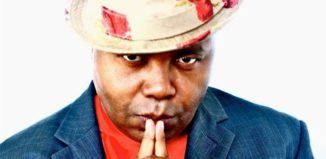Misconception
When most individuals talk about core training, they are thinking of exercises that will hopefully give them the oh‐so‐sought‐after chiseled “6‐pack.” Constant infomercials advertising equipment that will give anyone a “sexy core” add to that misconception.
A lot of individuals also believe that strengthening their “core”, by which they mean their abdominal muscles, will get rid of their lower back pain. The fact is that too many people out there have “ripped” abs and a bad lower back because their entire emphasis is on training just those visible abdominal muscles. An imbalance in any part of your musculature will have a ripple‐effect on the rest of your body. Who hasn’t seen the guy at the gym with the huge chest and arms and the chicken legs? It’s the same concept but, in the case of the core, the imbalance is not visible and therefore goes unnoticed until it manifests itself in the form of pain. By now, hopefully most individuals know that doing millions of crunches is not the solution to get that “ripped” mid‐section; proper eating habits combined with weight and cardiovascular training is the way to go.
The purpose of this article is not to expand on how to get a “6‐pack,” but to give you some useful information on the core musculature (without boring you with too much anatomy), why it is important to train it as a whole, and some exercises to get you started.
Basic Anatomy of the Core
The “core” is much more than just the rectus abdominis (commonly referred to as “6‐pack”) and external obliques. In fact, it is composed of 29 pairs of muscles that support the lumbo‐pelvic‐hip complex in order to stabilize the spine, pelvis, and kinetic chain during functional movement. (Faries, Greenwood, 2007) These muscles include the deep lumbar spine stabilizer muscles (also known as “postural” muscles), abdominal muscles, posterior muscles of the lower and middle back, and the hip muscles. One muscle is not more important than the other. Weakness in any of these muscle groups can lead to structural issues and injury and it is therefore essential to train the core as a whole.
Training the Core
Progression of training the core musculature works from the inside out, which means starting by training the local system (inner muscles) before moving on to the global system (outer muscles). I like to compare this concept to building a house: if you build the walls without the proper foundation, the house will collapse.
Exercises By Global and Local System
The local system is activated by slow movements with low resistance:
• Single‐leg lower and reach (lying on back)
• Marching (lying on back, hips off the ground)
• Prone bridge
• Prone bridge with hip extension
• Side bridge
• Long‐lever (overhead) crunch
The global system, which consist of more Type-II fibers, is better emphasized through dynamic, full‐range‐of‐motion exercises:
• T-rotation (prone bridge to side plank with extended arm)
• Twist on ball
• Cable wood chop and reverse cable wood chop (high to low and low to high)
• Skier crunch (legs on ball)





































